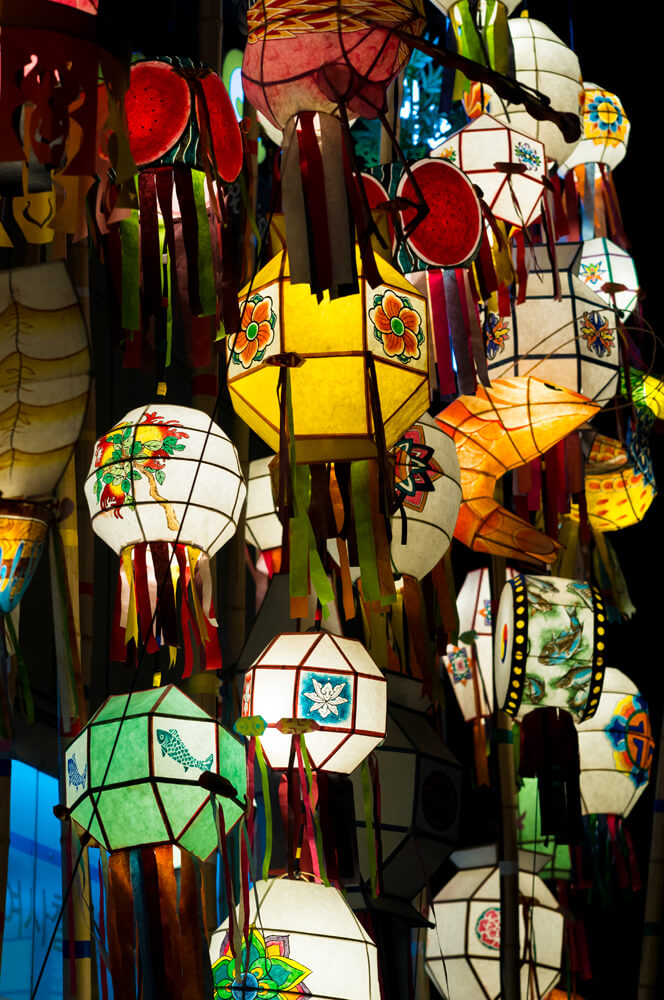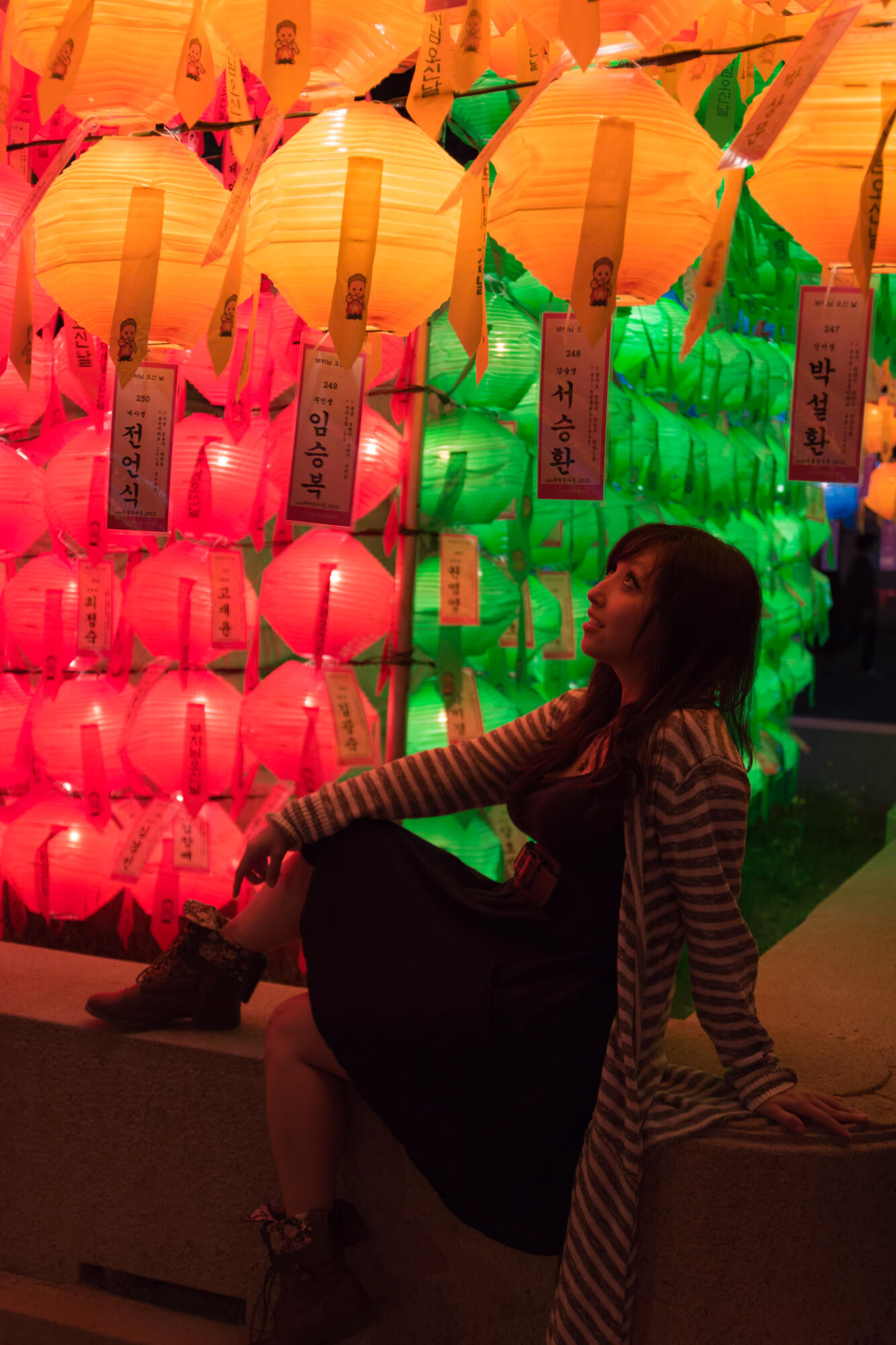
Once again, I headed out to 조계사 (Jogyesa) this year to celebrate Buddha’s birthday. In Korean, this day is called 석가탄신일 (Seokga Tansinil), meaning “Buddha’s birthday” or 부처님 오신 날 (Bucheonim Osin Nal) meaning “the day when the Buddha came.” In China and Korea, it is celebrated on the eighth day of the fourth month in the lunar calendar. The date varies from year to year, but it typically lands in April or May. This year, it fell on Monday, May 25th.



When you live in Korea, it is always quite apparent when this holiday is coming up, as the streets, temples and even rivers are decorated with beautiful colorful paper lantern for the entire month. Typically, as the day draws closer, more decorations are displayed and all sorts of parades and festivals are held, such as the famous Lotus Lantern Festival.



Two years ago, I visited the temple during the day and got to see and really experience the holiday. However, this year I had to work during the day (since I record live for a radio show), so the boyfriend and I decided to drop by at night. Best. Decision. Ever! The entire temple was lit up with hundreds of paper lanterns in all shapes, colors and sizes. It was really beautiful and not nearly as crowded as it is during the day. The surrounding streets were also lit up with tons of lanterns and it sort of reminded me of a scene out of Miyazaki’s Spirited Away, almost surreal.


Although I’m not Buddhist, I really enjoy the lovely rituals and festiveness of it all. This year I got to observe a ritual that I hadn’t seen before, which was the washing of the baby Buddha. According to ancient texts, when the Buddha was born he stood straight, took seven steps, and declared “I alone am the World-Honored One.” He pointed up with one hand and down with the other, to indicate that he would unite heaven and earth. The ritual of “washing the baby Buddha” is to commemorate this moment. A small standing figure of the baby Buddha, with the right hand pointing up and the left hand pointing down, is placed on an elevated stand within a basin on an altar. In the case of the ritual I saw, the baby Buddha was placed in a sort of shrine composed of a colorful assortment of fresh flowers. People approached the altar one by one, filled a ladle with water (or tea), and poured it over the figure to “wash” the baby.



As I roamed the temple grounds I could smell the incense wafting through the air. People were lighting candles and offering flowers to the statue of baby Buddha. The giant doors of the temple were flung open to reveal the three towering Buddhist statues inside with people siting in silent prayer at their feet. Minus the the noise of the photo snapping crowds and the crew tearing down the stage from the day’s earlier festivities, there was something incredibly serene about watching others in prayer.



If you’ve never experienced this holiday firsthand in Korea, then I highly recommend visiting the temples during the day. There are performances, parades, arts and crafts and even free food. There’s plenty to see and do, but if you’ve seen it all before then you definitely have to go at night. The activities may be fewer, but they’re definitely worth going to, if only to just admire all the pretty lanterns. The colors of the lanterns dancing across the night sky is a sight you surely will never forget.

Reblogged this on So, You Think You Can Teach ESL?.
Wow! Interesting and pictures you have taken!
Thanks so much Alex!!! *^^*
Beautiful photos! It’s my fave Korean holiday, too~ ^^
Thanks so much! It really is a lovely holiday isn’t it? ^^
Your photos are gorgeous! I am so happy to be following along on your beautiful adventures! 🙂
Thanks so much! I’m so glad you enjoy my blog <3
We love it! 🙂
Just shared this article on our Facebook! I think our readers will be thrilled to discover your awesome blog! 🙂
Thanks a bunch! I really appreciate the love <3